Steering the Dynamic Landscape of Modern Projects
In an era defined by rapid technological advancements and changing market demands, mastering Agile Business Analysis has become imperative for professionals aiming to stay at the forefront of project management. Agile methodologies offer a dynamic framework that adapts to evolving requirements and ensures swift, customer-centric delivery. This article explores the key principles, practices, and skills necessary for mastering Agile Business Analysis, providing insights into how this approach can drive project success in today's fast-paced business environment.
Understanding Agile Business Analysis
Agile Business Analysis is an iterative and customer-centric approach to project management that prioritizes flexibility, collaboration, and continuous improvement. At its core, Agile emphasizes delivering incremental value to end-users through frequent, small releases. A Business Analyst plays a crucial role in this process, liaising between stakeholders and development teams to ensure project objectives align with business goals.
Key Principles of Agile Business Analysis
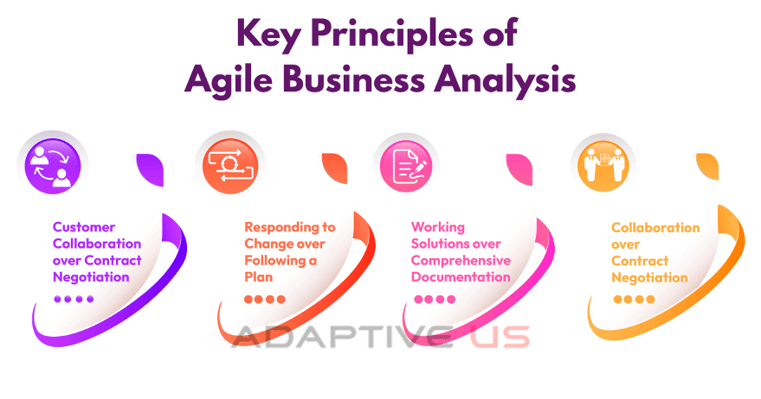
- Customer Collaboration over Contract Negotiation: Agile strongly emphasizes customer collaboration, valuing ongoing communication and feedback. Business analysts must foster a close relationship with stakeholders, ensuring that their evolving needs are understood and integrated into the project's direction. Agile puts a strong emphasis on growth and mutual collaboration with customers.
- Responding to Change over Following a Plan: Agile keeps the customer at the center and works closely in accordance with the customers' evolving needs. Change is embraced as a natural part of the development process. Business Analysts must be adaptable and responsive, ready to adjust requirements and priorities based on evolving market conditions, customer feedback, and emerging opportunities.
- Working Solutions over Comprehensive Documentation: While documentation is essential, Agile prioritizes working solutions as the primary measure of progress. Business Analysts must focus on delivering tangible outcomes and working products and collaborating with teams to ensure that documentation enhances rather than hinders the development process.
- Collaboration over Contract Negotiation: Agile values the collaboration between cross-functional teams, emphasizing open communication and shared responsibility. Business Analysts facilitate collaboration by breaking down silos, fostering a culture of transparency, and ensuring that all team members contribute their unique expertise.
Skills Required for Mastering Agile Business Analysis
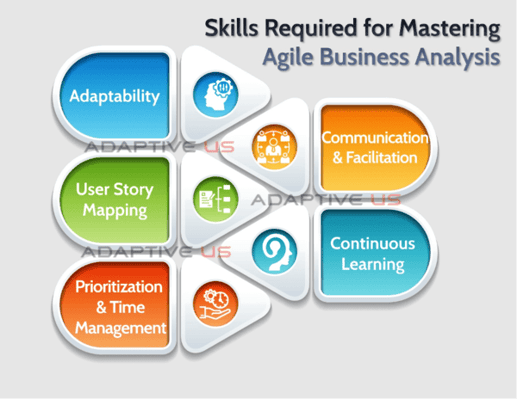
- Adaptability: Agile projects are characterized by their fluidity and the need for quick adaptation to change. Business Analysts should be adept at adjusting their strategies and requirements in response to evolving project needs and stakeholder priorities.
- Communication and Facilitation: Strong communication skills are crucial for Business Analysts to effectively convey requirements, facilitate collaboration, and ensure that all team members understand project goals. Clear communication fosters a collaborative environment that is essential for Agile success.
- User Story Mapping: User stories are a fundamental component of Agile projects, concisely expressing requirements from an end-user perspective. Business Analysts must master the art of user story mapping, breaking down features into user stories and ensuring they align with business objectives.
- Prioritization and Time Management: Agile projects often involve tight timelines and frequent releases. Business Analysts must excel in prioritizing requirements based on business value and ensuring that the most critical features are delivered within each iteration.
- Continuous Learning: The Agile landscape constantly evolves, with new frameworks and practices emerging. Business Analysts must be committed to continuous learning, staying informed about the latest trends, and adapting their skills to align with the evolving needs of Agile projects.
Best Practices in Agile Business Analysis
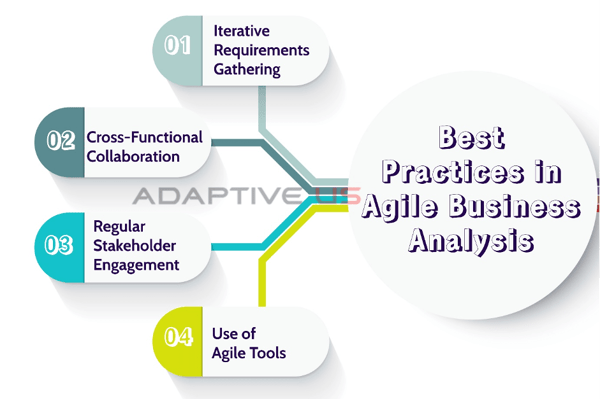
- Iterative Requirements Gathering: Agile Business Analysis favors iterative and incremental gathering instead of attempting to gather all requirements upfront. This allows for adjustments based on continuous feedback, reducing the risk of late-stage changes and ensuring that the project remains aligned with evolving business needs.
- Cross-Functional Collaboration: Agile projects thrive on collaboration among cross-functional teams. Business Analysts should actively engage with developers, testers, and other stakeholders, fostering an environment where everyone contributes unique insights to enhance the overall project outcome.
- Regular Stakeholder Engagement: Continuous stakeholder engagement is a hallmark of Agile. Business Analysts should regularly communicate with stakeholders, seeking feedback and validating assumptions to ensure the project remains on track and aligned with business objectives.
- Use of Agile Tools: Agile methodologies often benefit from using specialized tools for project management, communication, and collaboration. Business Analysts should be proficient in utilizing Agile tools such as Jira, Trello, or VersionOne to enhance team coordination and project visibility.
Challenges in Mastering Agile Business Analysis and Solutions
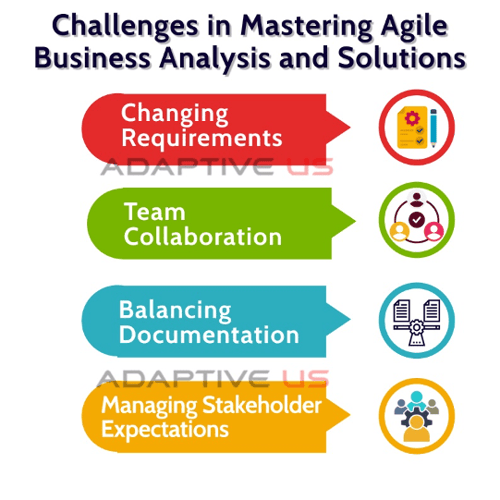
- Changing Requirements: Challenge: Agile projects are characterized by changing requirements, which can be challenging to manage. Solution: Business Analysts should embrace change, prioritize flexibility, and establish effective communication channels to manage evolving requirements seamlessly.
- Team Collaboration: Challenge: Cross-functional collaboration requires effective communication and coordination. Solution: Business Analysts should facilitate regular team meetings, encourage open communication, and foster a culture of shared responsibility to enhance collaboration.
- Balancing Documentation: Challenge: Balancing the need for documentation with the Agile principle of working solutions. Solution: Business Analysts should focus on creating just enough documentation to support project needs, emphasizing the value of working solutions as the primary measure of progress.
- Managing Stakeholder Expectations: Challenge: Stakeholders may have varying expectations and priorities. Solution: Business Analysts should engage stakeholders regularly, clarify expectations, and prioritize requirements based on business value to ensure alignment with stakeholder needs.
Embracing Agile Business Analysis for Project Success
Mastering Agile Business Analysis is not just a professional skill; it's a mindset that aligns with the dynamic nature of modern projects. Business Analysts who adeptly navigate Agile methodologies' principles, practices, and challenges position themselves as valuable contributors to project success. By embracing adaptability, fostering collaboration, and prioritizing customer-centricity, Business Analysts can unlock the full potential of Agile and drive innovation in an ever-evolving business landscape. As the demand for agility continues to rise, mastering Agile Business Analysis becomes not just a choice but a necessity for those seeking to excel in the field of project management.
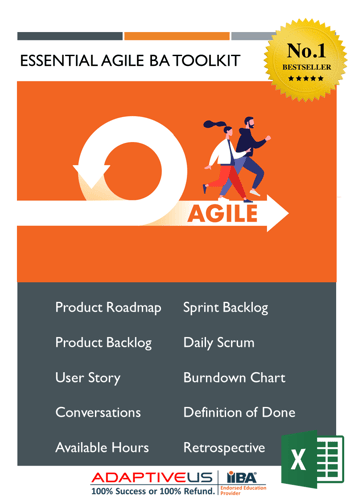
You May Also Like
These Related Stories

How to Prepare your Business for the Holidays

Applying Agile Principles to Transition Projects | Adaptive US



No Comments Yet
Let us know what you think